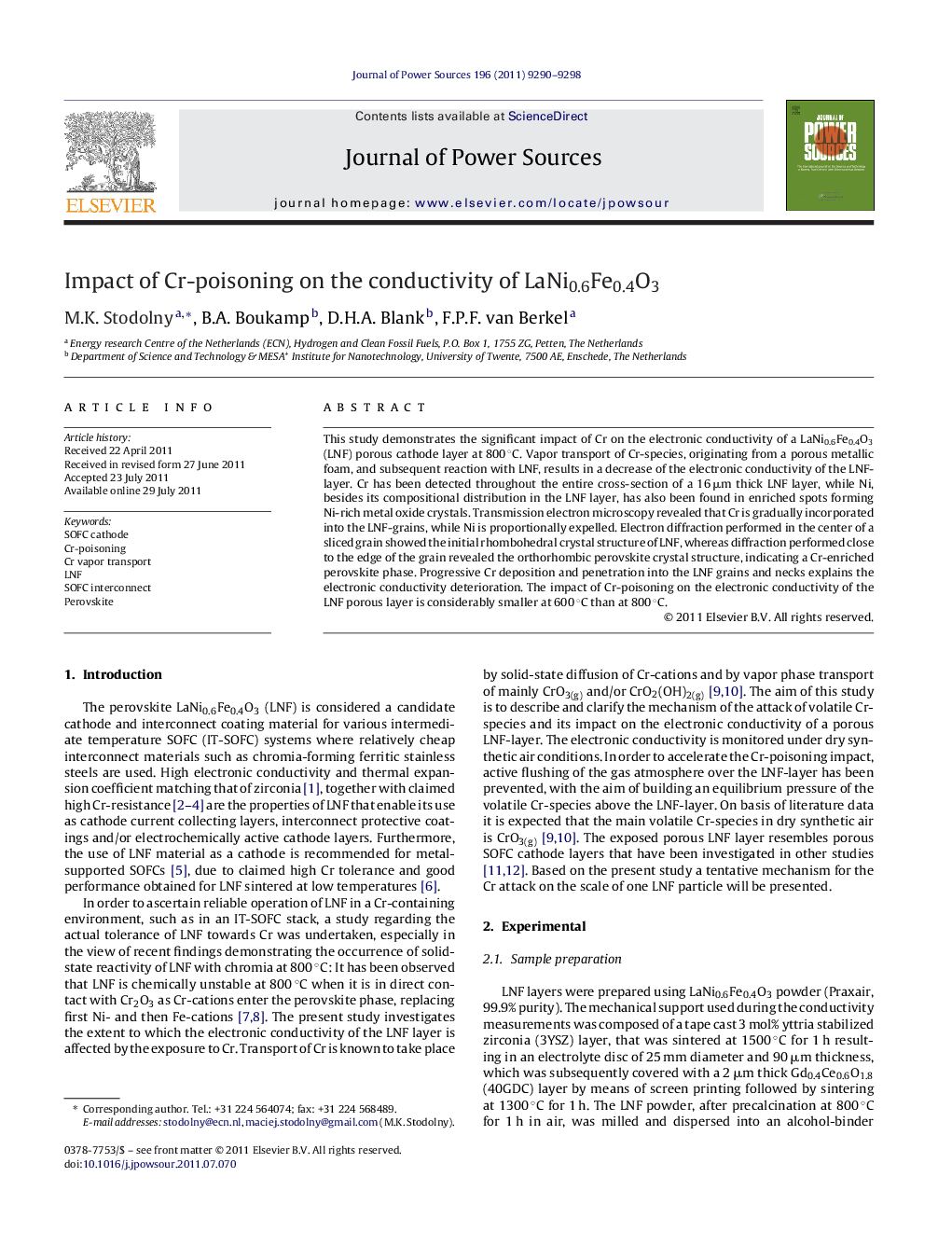| Article ID | Journal | Published Year | Pages | File Type |
|---|---|---|---|---|
| 1284674 | Journal of Power Sources | 2011 | 9 Pages |
This study demonstrates the significant impact of Cr on the electronic conductivity of a LaNi0.6Fe0.4O3 (LNF) porous cathode layer at 800 °C. Vapor transport of Cr-species, originating from a porous metallic foam, and subsequent reaction with LNF, results in a decrease of the electronic conductivity of the LNF-layer. Cr has been detected throughout the entire cross-section of a 16 μm thick LNF layer, while Ni, besides its compositional distribution in the LNF layer, has also been found in enriched spots forming Ni-rich metal oxide crystals. Transmission electron microscopy revealed that Cr is gradually incorporated into the LNF-grains, while Ni is proportionally expelled. Electron diffraction performed in the center of a sliced grain showed the initial rhombohedral crystal structure of LNF, whereas diffraction performed close to the edge of the grain revealed the orthorhombic perovskite crystal structure, indicating a Cr-enriched perovskite phase. Progressive Cr deposition and penetration into the LNF grains and necks explains the electronic conductivity deterioration. The impact of Cr-poisoning on the electronic conductivity of the LNF porous layer is considerably smaller at 600 °C than at 800 °C.
► Cr vapor species directly reacts with LNF at IT-SOFC operating temperatures. ► The Cr-attack comprises a replacement of Ni by Cr in the LNF perovskite lattice. ► Drop of the LNF conductivity is due to formation of a low-conductive Cr-rich phase. ► The segregated nickel forms Ni-rich metal oxide precipitates in the pores. ► Cr-poisoning impact on the LNF conductivity is smaller at 600 °C than at 800 °C.
